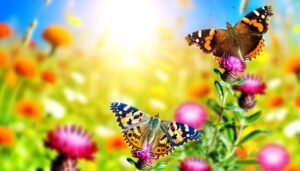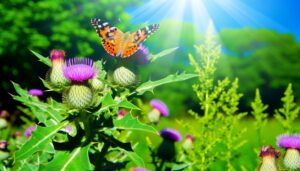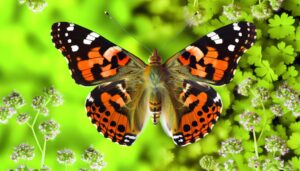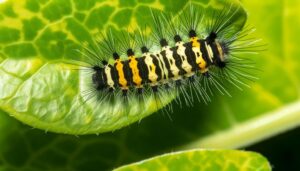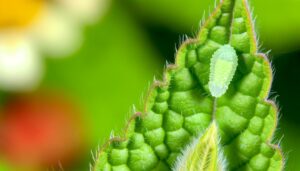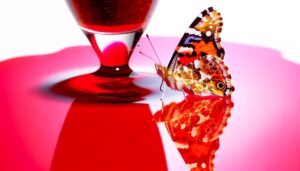Painted Lady Butterfly 5 Larvae Culture: Discover Process!
Rearing Painted Lady butterfly larvae demands precise conditions. Use a transparent container with proper ventilation to prevent mold. Line the base with a paper towel, and introduce a twig for climbing.
Ideal humidity is around 60%, and temperature should be stable between 68-75°F. Feed the larvae fresh, pesticide-free mullein leaves or an artificial diet, ensuring regular hydration.
Monitor larvae for growth and health, noting size, color, and frass consistency. Maintain cleanliness and adequate space to support successful pupation.
Meticulous attention to these details fosters a thriving larval culture. There’s much more to explore about their growth stages and pupation requirements.
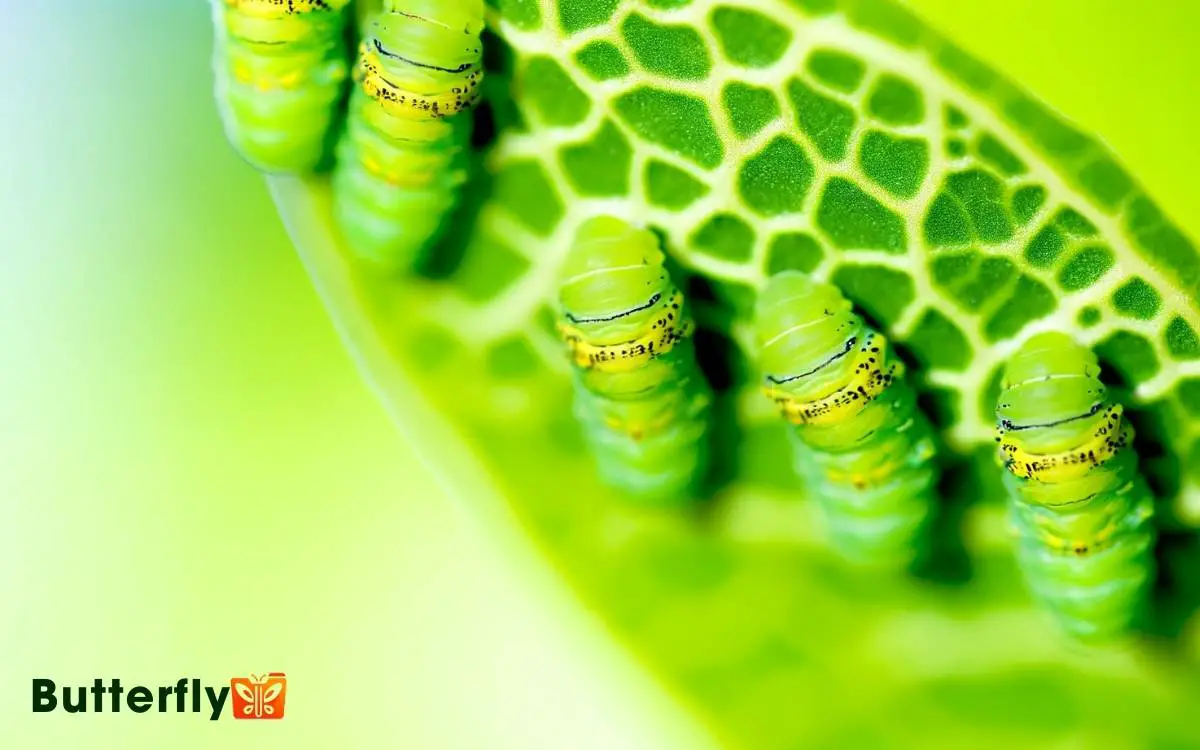
Key Takeaways
Choosing the Right Supplies
To successfully culture Painted Lady butterfly larvae, one must first gather essential supplies including a rearing container, nutrient-rich food sources, and appropriate environmental controls.
The rearing container should be transparent to facilitate observation and should allow adequate ventilation to prevent mold growth.
Nutrient-rich food sources are essential; specialized artificial diets or fresh host plants like thistle, mallow, or hollyhock should be prepared.
Environmental controls involve maintaining ideal temperature and humidity levels, usually between 70-85°F with moderate humidity. Ensuring these conditions minimizes stress on larvae and promotes healthy development.
Additionally, one should have fine mesh or netting to prevent larvae escape and facilitate air circulation. Proper supplies are fundamental to the successful cultivation of Painted Lady butterfly larvae.
Setting Up the Habitat
Creating a suitable habitat for Painted Lady butterfly larvae involves replicating their natural environment with precision to guarantee ideal growth and development. This can be achieved by providing an enclosure with adequate ventilation, a food source such as thistle or a special diet, and maintaining proper humidity levels. A painted lady butterfly kit simplifies this process by including all the necessary components to support the larvae as they grow and transform. With the right care, the larvae will successfully pupate and emerge as vibrant adult butterflies, ready for release into the wild.
Start with a clear plastic container to monitor their progress. Make sure the container has a breathable lid to maintain air circulation. Line the base with a layer of paper towel for easy cleaning, and place a twig or stick for the larvae to climb.
The habitat should be kept at room temperature, around 75°F (24°C), and away from direct sunlight to prevent overheating. It’s essential to maintain a consistent humidity level, ideally around 60%.
| Component | Specification | Purpose |
|---|---|---|
| Container | Clear plastic, breathable lid | Visibility, air circulation |
| Base Layer | Paper towel | Easy cleaning |
| Climbing Structure | Twig or stick | Larvae mobility |
Ensuring these conditions fosters a conducive environment for the larvae’s development.
Feeding the Larvae
Once the habitat is set up, providing the right diet is essential for the Painted Lady butterfly larvae’s growth and health. Larvae of Vanessa cardui exhibit rapid growth, necessitating a nutrient-rich diet.
The primary food source is mullein leaves, but they can also consume a specialized artificial diet for best development.
- Fresh mullein leaves – Ensure leaves are pesticide-free and fresh.
- Artificial diet – A prepared mixture containing essential nutrients.
- Regular feeding schedule – Replace food every 2-3 days to maintain freshness.
- Proper hydration – Mist leaves lightly to provide sufficient moisture without over-wetting.
These dietary guidelines, meticulously followed, will support the larvae through their important developmental stages, ensuring healthy growth and successful metamorphosis into Painted Lady butterflies.
Monitoring Growth and Health
Regular monitoring of the larvae’s growth and health is crucial for identifying potential issues and ensuring ideal development. Observing the larvae daily helps track their size and weight progression.
A healthy larva should exhibit consistent growth, vibrant coloration, and active movement. Look for signs of illness such as discoloration, lethargy, or irregular molting. Assess the frass (larval droppings) for abnormalities; it should be dark and pellet-like.
Environmental factors, including temperature and humidity, must be regulated within best ranges—20-25°C and 60-70% humidity, respectively.
Controlling these variables minimizes stress and promotes robust health. Recording data meticulously allows for early detection of problems, enabling timely interventions and fostering a thriving culture.
Ensuring Successful Pupation
Facilitating successful pupation involves providing a favorable environment that supports the larvae’s progression into the pupal stage. Critical factors include maintaining ideal temperature, humidity, and cleanliness.
- Temperature Regulation: Maintain a stable temperature range of 68-75°F (20-24°C) to facilitate proper metabolic activity.
- Humidity Control: Ensure a humidity level of 60-70% to prevent desiccation and support healthy pupal development.
- Adequate Space: Provide enough space for larvae to hang and form chrysalides without disturbance or overcrowding.
- Clean Environment: Regularly clean the habitat to remove frass and mold, reducing the risk of bacterial and fungal infections.
Conclusion
With the right supplies chosen, the habitat set up, the larvae fed, growth and health monitored, and successful pupation guaranteed, the painted lady butterfly larvae culture thrives.
Each stage, meticulously managed, contributes to the larvae’s transformation into vibrant butterflies. Observing these detailed processes reveals the intricate beauty and complexity of butterfly development, highlighting the importance of careful attention to each phase.
Proper care guarantees not only survival but also the flourishing of these remarkable creatures.

